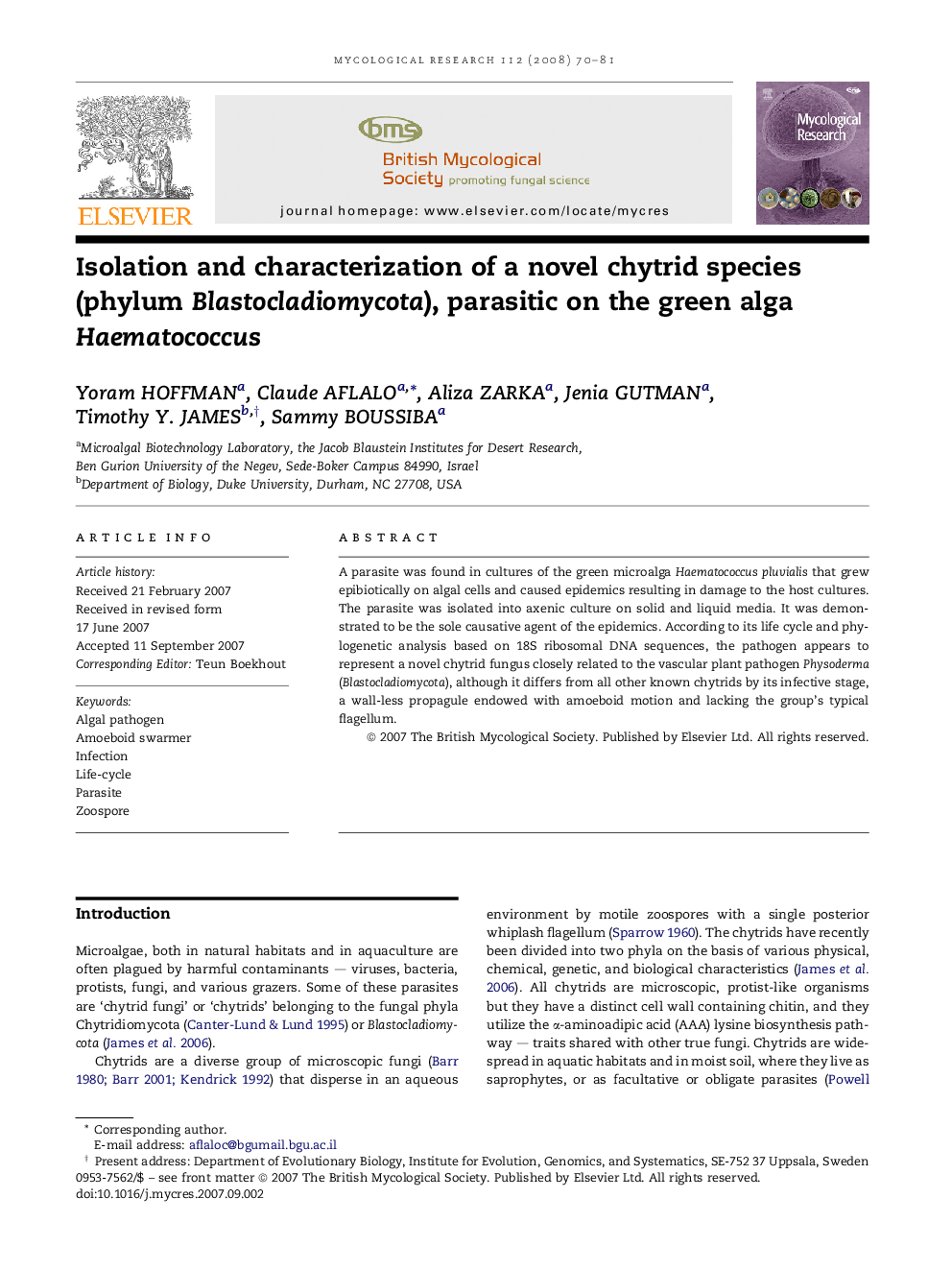| Article ID | Journal | Published Year | Pages | File Type |
|---|---|---|---|---|
| 4357797 | Mycological Research | 2008 | 12 Pages |
Abstract
A parasite was found in cultures of the green microalga Haematococcus pluvialis that grew epibiotically on algal cells and caused epidemics resulting in damage to the host cultures. The parasite was isolated into axenic culture on solid and liquid media. It was demonstrated to be the sole causative agent of the epidemics. According to its life cycle and phylogenetic analysis based on 18S ribosomal DNA sequences, the pathogen appears to represent a novel chytrid fungus closely related to the vascular plant pathogen Physoderma (Blastocladiomycota), although it differs from all other known chytrids by its infective stage, a wall-less propagule endowed with amoeboid motion and lacking the group's typical flagellum.
Keywords
Related Topics
Life Sciences
Agricultural and Biological Sciences
Agricultural and Biological Sciences (General)
Authors
Yoram Hoffman, Claude Aflalo, Aliza Zarka, Jenia Gutman, Timothy Y. James, Sammy Boussiba,
